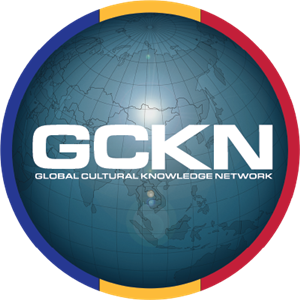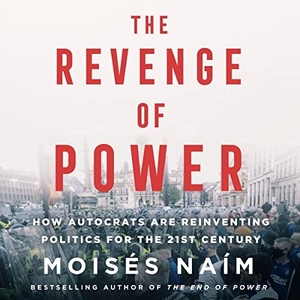DARPA Director Stefanie Tompkins Kick-off for the New SMA Series on the Mind-tech Nexus
Speaker: Dr. Stefanie Tompkins, (Director, Defense Advanced Research Projects Agency [DARPA]) Date: 26 May 2022 Speaker Session Summary SMA hosted a speaker session with Dr. Stefanie Tompkins (Director, Defense Advanced Research Projects Agency [DARPA]) as part of its SMA Mind-Tech Nexus Speaker Series. Advances in neuro-technology have been used for both the benefit and detriment of society. […]
Continue ReadingAvoiding a Climate Arms Race: Why We Need the Baruch Plan 2.0 for Climate Geoengineering
Speaker: Dr. Elizabeth Chalecki (Associate Professor of International Relations, University of Nebraska Omaha; 2022 Fulbright Research Chair, Fulbright Canada) Date: 18 May 2022 Speaker Session Summary SMA hosted a speaker session with Dr. Elizabeth L. Chalecki (Associate Professor of International Relations, University of Nebraska Omaha; 2022 Fulbright Research Chair, Fulbright Canada) as part of its SMA “Anticipating the […]
Continue Reading
The Exploitable Conditions Framework: Anticipating Exploitation of the Operational Environment
Speakers: Dr. Nicole Laster (US Army TRADOC G-2, Global Cultural Knowledge Network (GCKN)) and LTC (Ret) Andrew Johnson (US Army TRADOC G-2, GCKN) Date: 5 May 2022 Speaker Session Summary SMA hosted a speaker session with Dr. Nicole M. Laster (Lead Social Scientist, US Army TRADOC G-2, Global Cultural Knowledge Network (GCKN)) and LTC (Ret) Andrew M. […]
Continue ReadingHow America Can Seize Its Great-Power Opportunity
Speaker(s): Wyne, A. (Eurasia Group) Date: 4 May 2022 Speaker Session Summary SMA hosted a speaker session with Mr. Ali Wyne (Senior Analyst, Eurasia Group) as part of its SMA General Speaker Series. Past US foreign security policies primarily focused on adversaries’ capabilities and objectives rather than its own ability to project its desired messages and worldview. This […]
Continue ReadingMulti-Actor Deterrence: Why Multiple Perceptions Matter
Speaker(s): Black, M. (Assistant Professor, Department of Political Science, University of Nebraska Omaha; Director for Workforce Development and Education, National Counterterrorism, Innovation, Technology and Education (NCITE); Research Fellow, National Strategic Research Institute, University of Nebraska; Co-Editor, Space and Defense Journal) Date: 26 April 2022 Speaker Session Summary SMA hosted a speaker session with Dr. Michelle […]
Continue ReadingThe Evolving Requirements for Extended Deterrence and Allied Assurance in the Indo-Pacific
Speaker(s): Smith, S. (Air Force Institute for National Security Studies, US Air Force Academy); Anderson, J. (Senior Policy Fellow, Center for the Study of Weapons of Mass Destruction, National Defense University) Date: 27 April 2022 Speaker Session Summary SMA hosted a speaker session with Dr. Shane Smith (Director, Air Force Institute for National Security Studies, […]
Continue ReadingThe Future of European Security
Speaker(s): Goldgeier, J. (Stanford University; The Brookings Institution; American University) Date: 20 April 2022 Speaker Session Summary SMA hosted a speaker session with Dr. James Goldgeier (Visiting Scholar, Center for International Security and Cooperation, Stanford University; Visiting Fellow, The Brookings Institution; & Professor of International Relations, School of International Service, American University) as part of its SMA […]
Continue Reading
The Revenge of Power: How to Defeat the Autocrats Who Are Reinventing 21st Century Politics
Speaker(s): Naím, M. (Carnegie Endowment for International Peace) Date: 19 April 2022 Speaker Session Summary SMA hosted a speaker session with Dr. Moisés Naím (Distinguished Fellow, Carnegie Endowment for International Peace) and moderator Dr. Nicholas Wright (Intelligent Biology, University College London, New America, and Georgetown University) as part of its SMA General Speaker Series. While discussing his new book […]
Continue ReadingThe Perils of Sticky Rhetoric: A Discussion Led by Professor Ian Lustick
Speaker: Dr. Ian Lustick (University of Pennsylvania) Date: 14 April 2022 Speaker Session Summary SMA hosted a speaker session with Professor Ian Lustick (Bess W. Heyman Chair (Emeritus), University of Pennsylvania) as part of its SMA Anticipating the Future Operational Environment (AFOE) Speaker Series. The Global War on Terror shifted US global policies and actions while also enabling countries’ leaders to persecute […]
Continue ReadingSecret Innovation
Speaker(s): Joseph, M. (UC San Diego); Poznansky, M. (US Naval War College) Date: 13 April 2022 Speaker Session Summary SMA hosted a speaker session with Dr. Michael Joseph (Assistant Professor of Political Science, UC San Diego) and Dr. Michael Poznansky (Associate Professor, Strategic & Operational Research Department, US Naval War College) as part of its SMA GeneralSpeaker Series. […]
Continue Reading